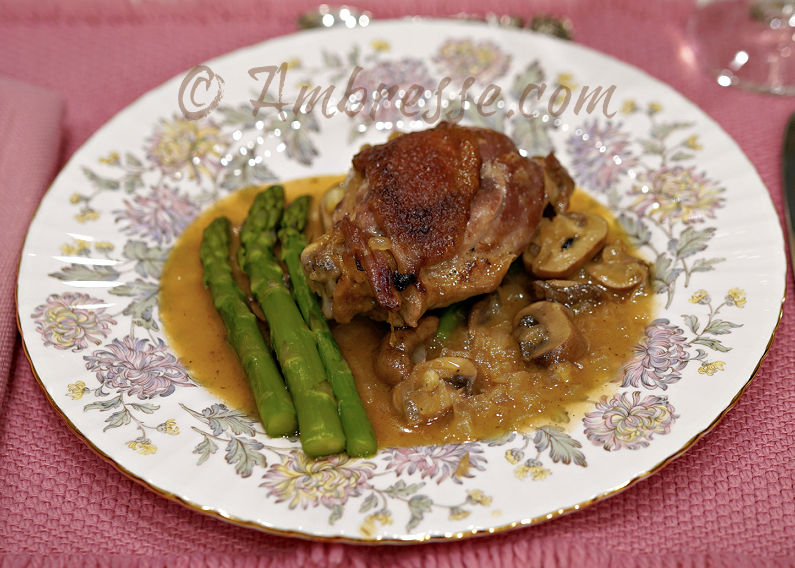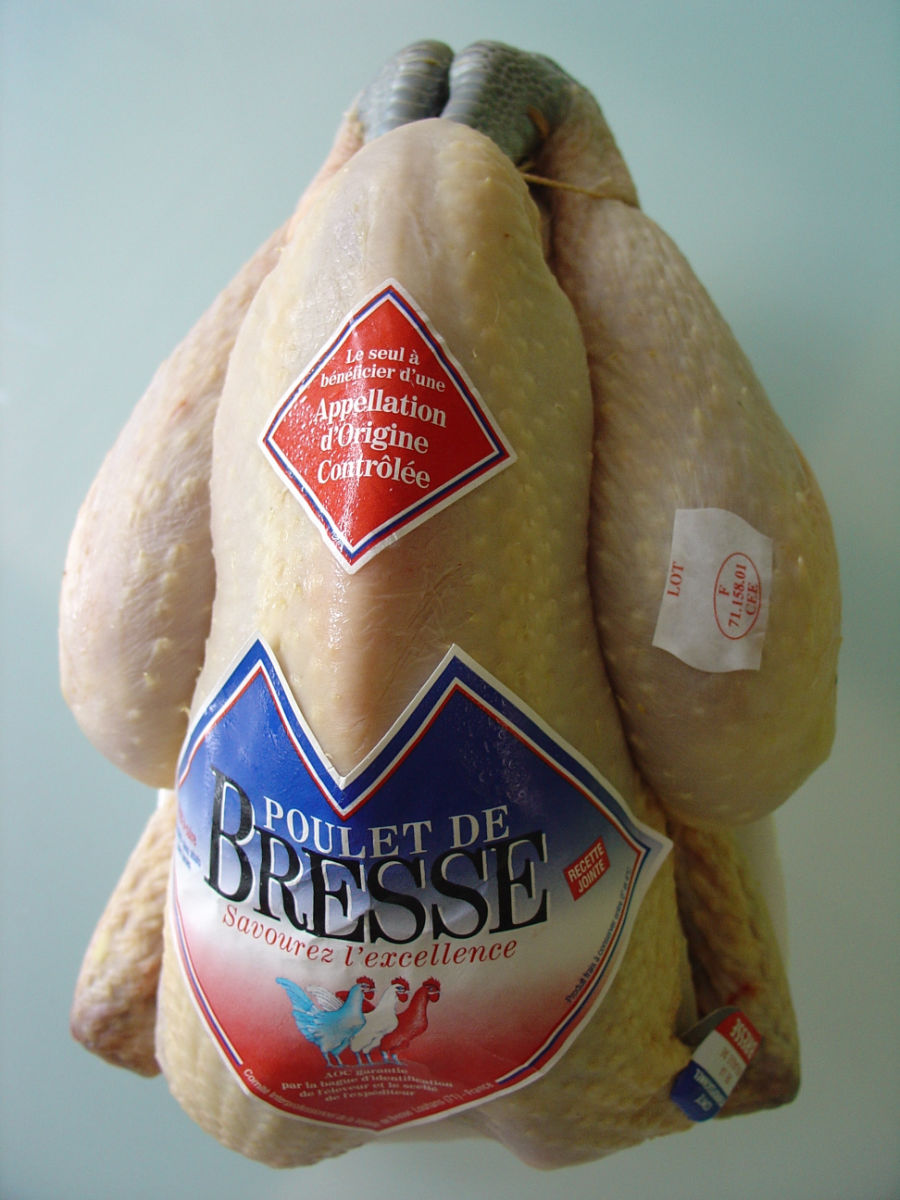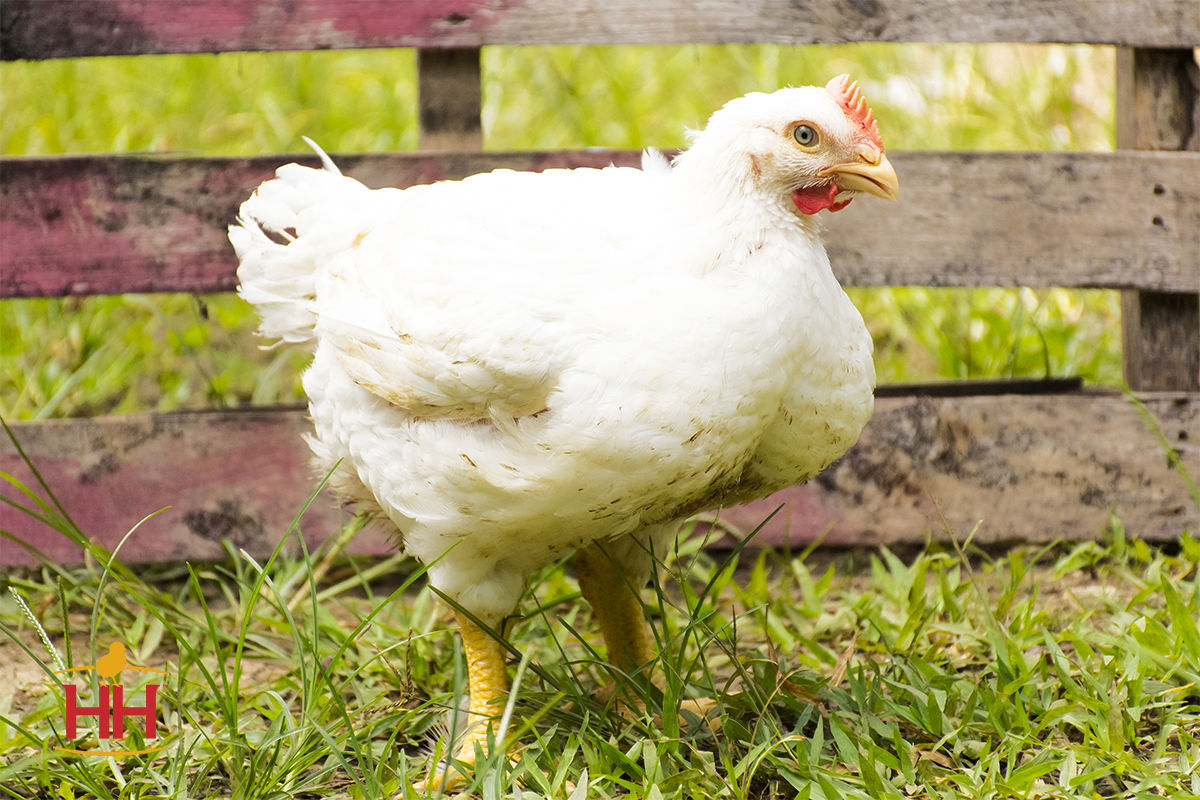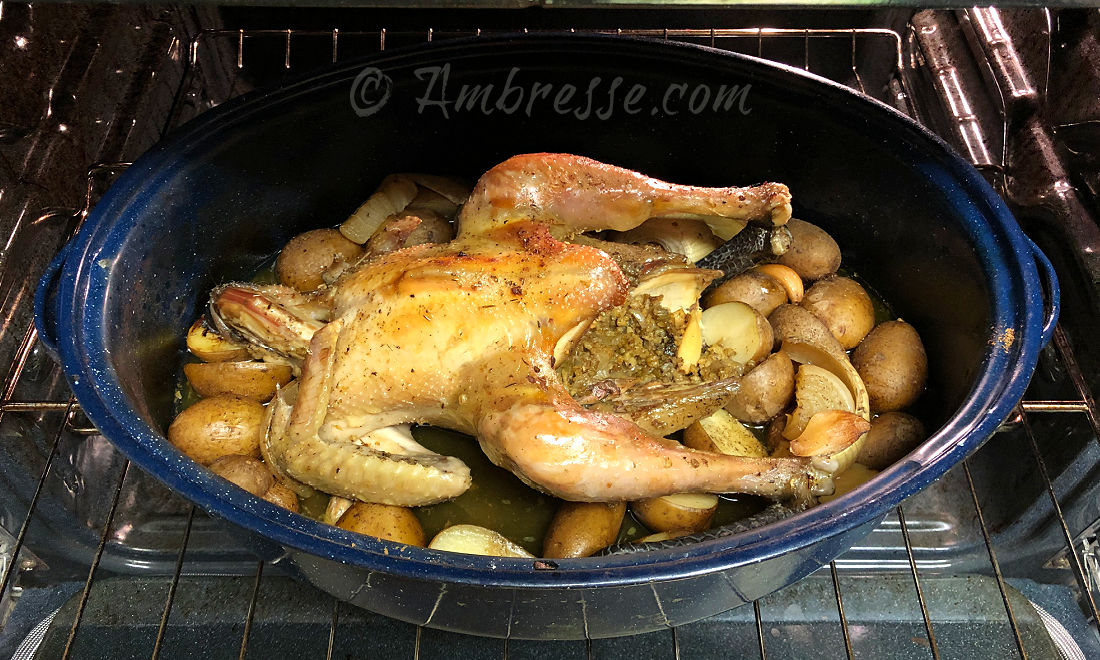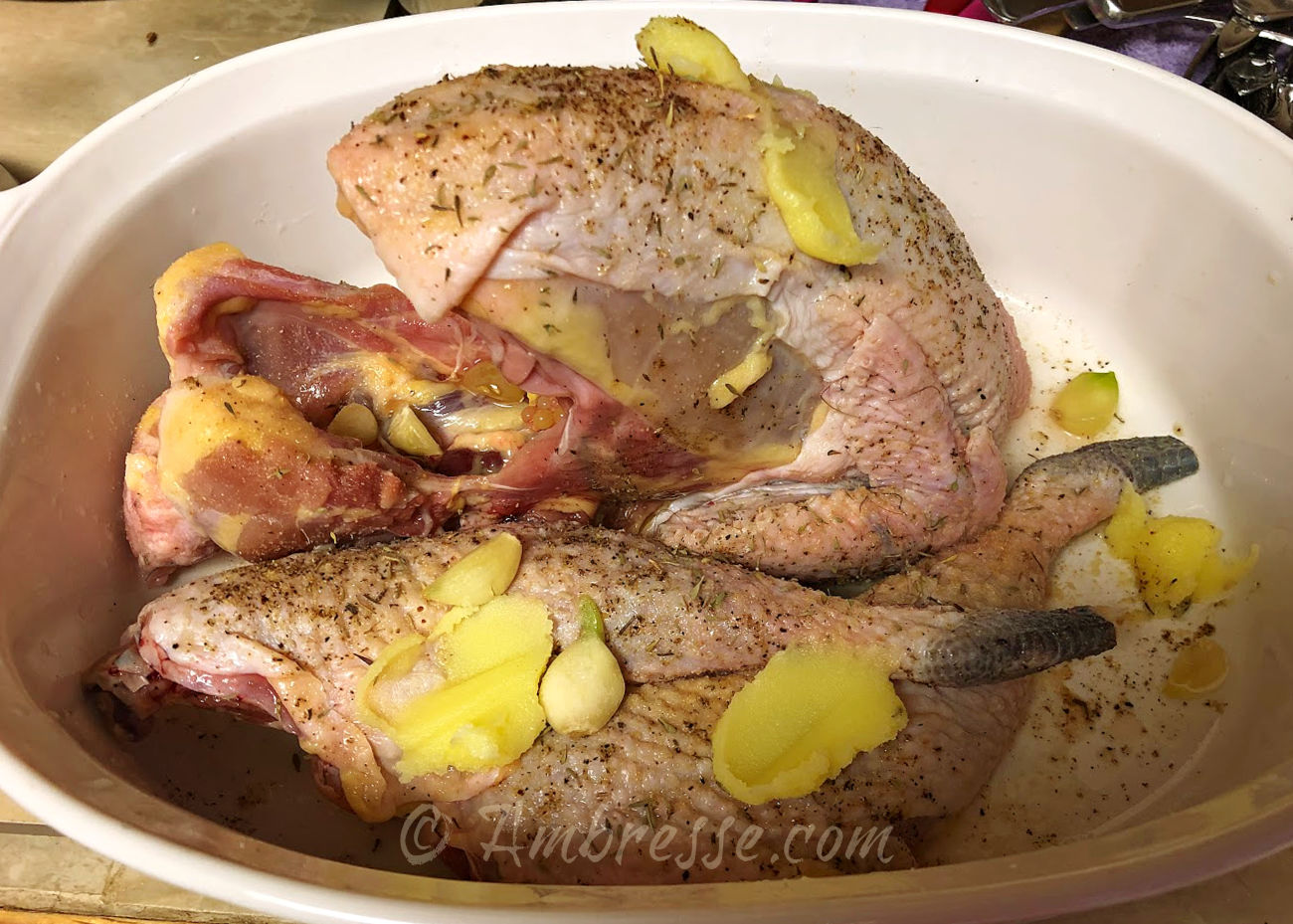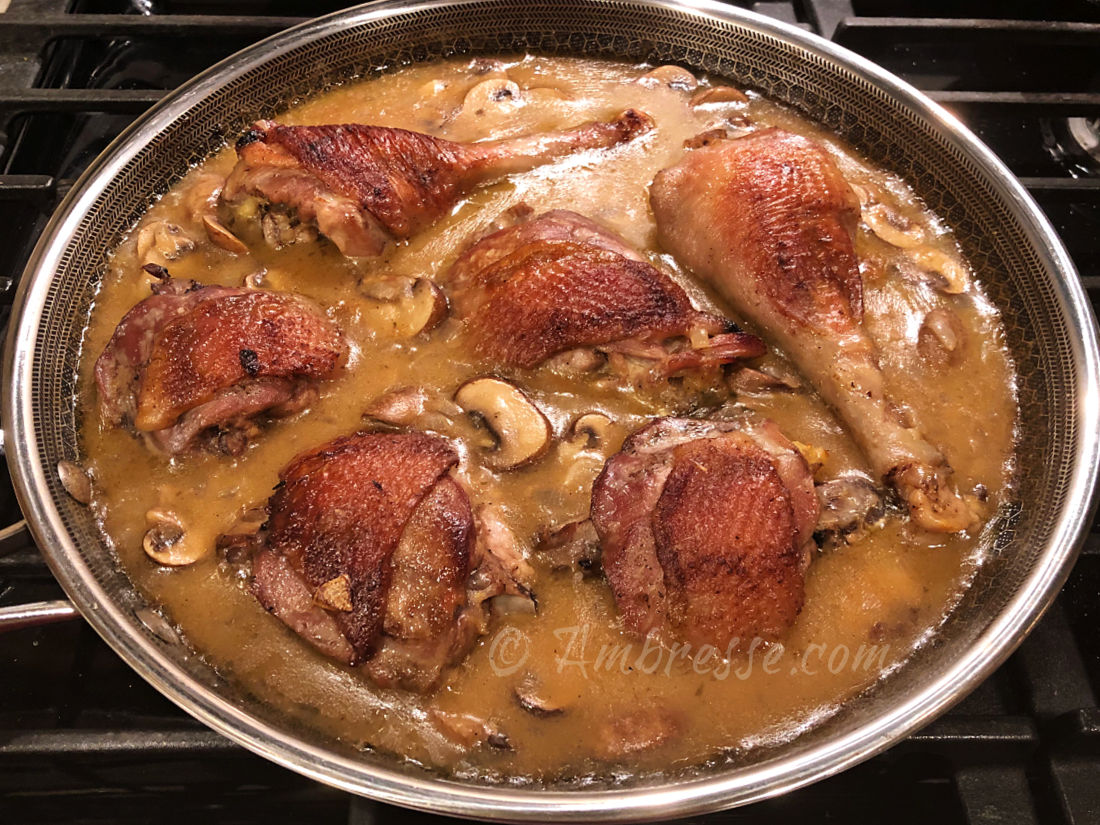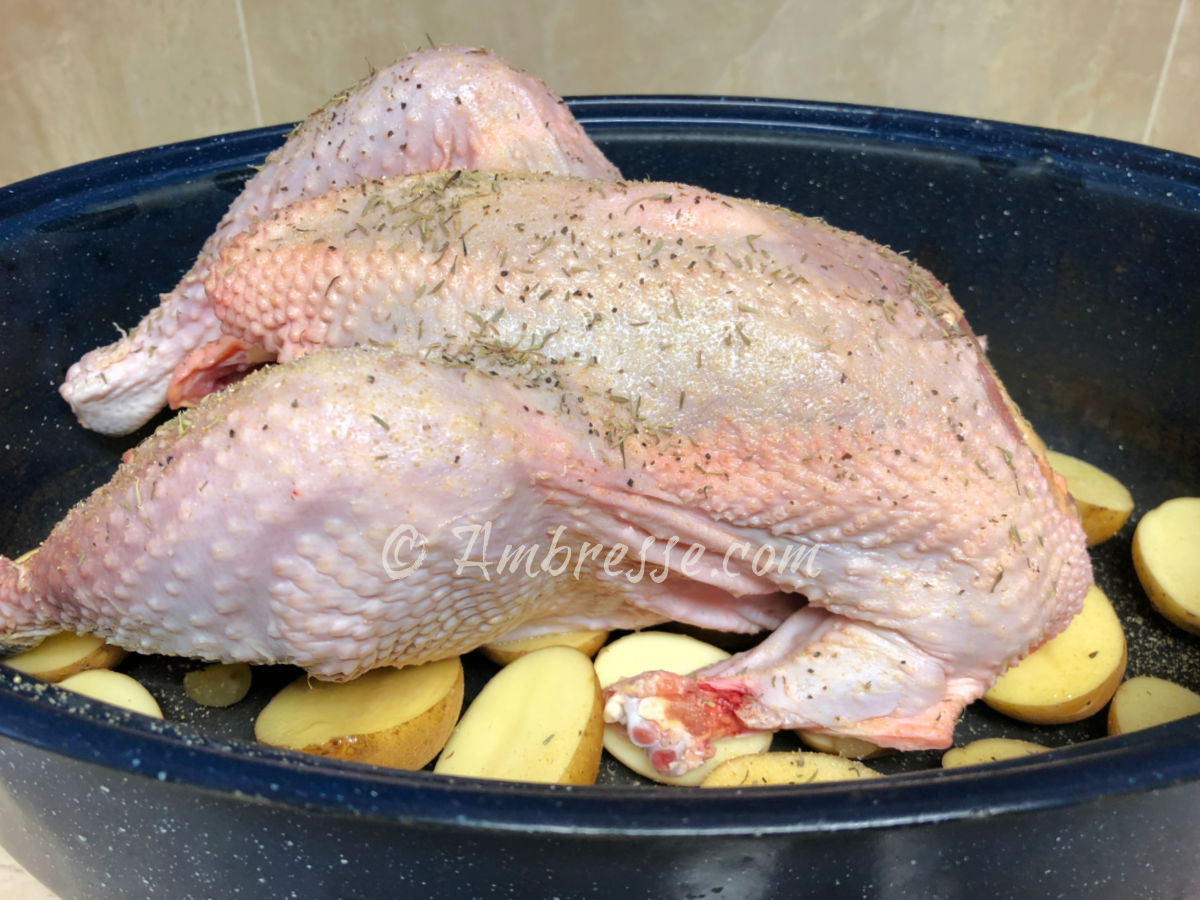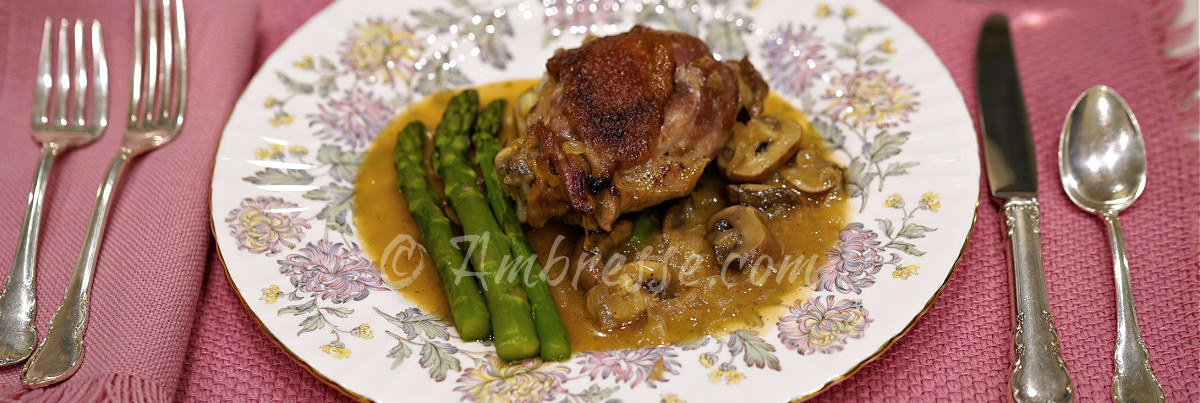How to Cook Bresse Chicken
How to Cook Bresse Chicken, really delicious American Bresse poultry instead of run-of-the-mill store bought chicken. Here are some essential cooking tips for preparing and cooking with American Bresse poultry.
Everyone knows how to cook store-bought "chicken." Our standard expectations are met and even exceeded when restaurants serve up their specialties, say, rotisserie chicken or parmigiana.
A Confounding Texture?
These days, American Bresse heritage chicken is becoming a huge hit amongst many homesteaders and backyard flock owners. High end chefs already love them!
But for the rest of us, the promise of incredible flavor seems to be connected to a confounding texture. Some heritage chickens provide but little similarity in texture to the soft, almost mushy Cornish Cross chicken that we're all familiar with. It can be off-putting to those whose hobbies don't include gourmet cooking.
Is that you? It sure is me. This page is for us, the absolute novices. I hope it will shorten the how to cook Bresse chicken learning curve for all of us.
The good news is that nearly everyone can quickly master a few easy tricks to cooking with American Bresse, and finally experience the "queen of chickens and the chicken of kings" around the dinner table.
Plus, we'll link you to some amazing tried and true recipes, nearly all of them provided by the chefs themselves.
This Page on How to Cook Bresse Chicken
- The "Case" Against Bresse - A Learning Curve
- About Cornish Cross Chickens
- How to Cook Bresse Chicken: Age at Processing
- Links to American Bresse Recipes
- Disappointing Results? How to Salvage your Chicken
Click a link to go directly to your topic of interest.
The Smart Butcher Refused to Sell a Bresse
There is a huge experiential divide between cooking and eating grocery store chicken (the hybrid known as Cornish Cross), and any other heritage or homestead chicken. That divide widens even further when poulet de Bresse enters the equation.
In the article, “Another Kind of Bird”1, author Joe Ray tells the story of his friend Nicole, a Canadian who moved with her fiancé to Paris, France.
In order to impress her fiancé with her great cooking prowess, she walked the cobblestone walk ways to the poultry shop, intending purchase the renowned volaille de Bresse2 directly from the meat shop. The butcher, who had them right there behind the glass, flatly refused to sell one to her.
“Non!” he exclaimed. “You’re not ready.”
Months later, Monsieur Butcher finally sold Nicole a coveted Bresse poultry, after "probing the depths of her culinary knowledge over several months of her visits to the market."
She eventually returned to Canada and recounted the experience to Joe. At the end she remarked, “It took me a while to realize he didn’t want me to have a bad experience... He needed to make sure that the foreigner...had the chops. If [I] was going to cook a 40-euro bird, he wanted a happy customer."
Exactly right.
How to Cook Bresse Chicken:
The Learning Curve
A degree in Culinary Arts for American Bresse breeders or consumers is not required, thankfully.
Just know in advance that cooking American Bresse chicken may require a learning curve, which is why the wise butcher hesitated to sell the most delicious chicken in the world to a newbie. It will almost certainly require different cooking techniques depending on the age of the poultry when processed.
But that's not a bad thing. Before you know it, your coq au vin entrée will exceed your expectations for succulence and flavor.

About those Cornish Cross...
All commercial chicken you buy at the grocery store and dine on in every restaurant, are known as Cornish Cross hybrid chickens. (Pictured - click the photo to enlarge.)
Cornish Cross hybrids (CX) have a double copy of growth genes, and are of necessity harvested very young. They're on their way to the market almost before they've outgrown the cradle, so to speak, and already they might weigh 7-9 pounds. They are ubiquitous, and, possibly not surprisingly, of inferior quality to heritage-bred or homestead chicken.
We wrote the page, Cornish Cross Chickens to better understand the differences between Cornish Cross and American Bresse. Click the link to learn more!

How to Cook Bresse Chicken:
According to Age
Truth is, the American Bresse breed is not built like Cornish Cross and is not at all ready for harvest at six weeks of age. In fact, it would be a disservice to the genetic potential of American Bresse poultry to harvest that early.
The world have learned to understand and adapt to Cornish Cross best cooking practices, and now it is time to re-learn and re-adapt to cooking methods ideal for bred-to-standard heritage breeds, including American Bresse Chickens.
Age at Processing is Important!
In the grocery store, "chicken" comes in three categories. 1) "Cornish Game Hens" are Cornish Cross that are 3-4 weeks old. 2) "Fryers" are CX that are processed at 6-7 weeks of age. And 3) One can purchase older and bigger CX roaster and stewer birds.
When it comes to American Bresse, age distinctions become much more significant as regards HOW to cook Bresse chicken, especially for those who grow them and can butcher them at any age.
Here are some general cooking guidelines to consider:
- At 6-8 weeks: At this age, the deep flavor of the American Bresse Chicken has not developed. Even in Cornish Cross fryers, their flavor has not developed to any great extent, which is why the CX has soft meat and very mild flavor. If you're thinking about raising and processing American Bresse this young, you may as well go purchase a Cornish Cross fryer at the grocery store, or raise your own Cornish X from chicks.
- 8-10 weeks: At this age, American Bresse poultry can be mostly treated as you would a CX. The flavor will be building, fat deposition may or may not be present in small amounts, and the meat may be minimally more al dente, but your dining experience is likely to be a very good one overall.
- 10-12 weeks: At this age, the uniquely Bresse traits are starting to assert themselves. The flavor starts building by roughly week nine, so you are likely to enjoy a richness of poultry flavor. At the older range (12 weeks), the farmer may have started the finishing process. The poultry is still young enough to fry up on the stove or grill. At this age I enjoy flouring them with a family-favorite recipe, and frying in butter or ghee. I tend to target 11-12 weeks for fryers rather than a younger age.
- 12-14 weeks: At this age, the distinctive rich flavor with the unique "it" factor is solidly building. At Ambresse Acres, they will be already 10-days to 2-weeks finished. Cooking method begins to make a difference in tenderness and succulence. Some people fry successfully, others prefer roasting.
- 14-16 weeks: At this age, the poultry is beginning to enter the age of the roaster. If not prepared carefully or cooked long enough, the muscle fibers may seem more chewy and textured. But when prepared well, the 14-week to 20-week age is an ideal age to get the most enjoyment from your American Bresse poultry. (Nine-month-old capons are the pinnacle of Bresse dining, I'm told, but that is a story for another day.)
- 16-18 weeks: At this age and older, there is no mistaking that "it" factor flavor - amazing! When roasted low and slow, in my experience, you'll be spoiled for any other quality of chicken.
- 18-20 weeks: At this age, the birds are large - up to 5 or more pounds after processing. They may have been finished, and may be well marbled with fat between the muscle groups. Bird size needs to be factored into the cooking time. Low-and-slow roasting will be essential. Your meal will be delicious and succulent! See several 'low 'n slow' methods below.
- 20+ weeks: Considerations at this age are no different than the 18-20 week age bracket. The last cockerel I processed and roasted was about 22 weeks old. The flavor was out of this world, and more moist than any chicken I remember eating. I had followed the recipe for Slow Roasted Bresse Chicken in White Wine Mushroom Cream Sauce, which utilizes a very low and slow cooking approach, and ohmygoodness, I highly recommend that recipe!
- Full Adult / Old: There comes an age at which your cooking options are reduced to one: the stew pot. That's okay - American Bresse make wonderful stews and soups, because the rich flavors are still present, even if the meat requires a LOT of cooking before softening enough to eat. It is easy to throw an old bird into a crock pot, follow your favorite stew recipe, and then go off to work. In the evening, the bird will be done and delicious.
Cooking Tip: Low and Slow
A main recommendation for how to cook Bresse chicken is to cook it "low and slow." This is because American Bresse are not processed at age 6-8 weeks as are Cornish Cross chickens; the additional weeks of age do make a difference in the texture of the meat.
The eating experience can range from 'al dente' to "a lot of work to chew." According to the hub when I failed to do justice to the bird in the pot, "It's not enjoyable eating, that's for sure." Okay then! That is how it can be when the age of the bird is not respected.
Basic "Low and Slow" Cooking Options
- Roasting time for a 4-pound bird: Roast for 4 hours at 300 degrees, started in a cold oven. Remove cover for the last half-hour to brown the skin. Baste as needed.
- Another roasting option for a 4-pounder: Roast for 2 hours at 235 degrees, then 2 more hours at 265 degrees. At the end, if needed, turn the broiler on high for 5 minutes to brown the skin.
- For frying, here's a trick: Fry the pieces on both sides in a hot cast iron skillet until skin is crispy, then roast in a 325 degree oven until the internal temp reaches 160 degrees.
- To stew: Place in a crock pot on low for 8 hours. Alternatively, you can simmer the bird in a dutch oven on the stove-top for several hours depending on the weight of the bird.
Another Cooking Tip: Use Sauces in Your Recipes
Use recipes that will contribute to the moisture of the recipe. The French like to use cream, and wine sauces, often including mushrooms. The flavorful liquids continue to cook, soften, and enhance the succulence of submerged chicken pieces until removed from the heat.
American Bresse Chicken Recipes
The Ambresse Recipe Section is growing! The recipe collection starts here:
Now that you know how to cook Bresse chicken, check out one or more recipes featuring delectable cuisine from breeders of American Bresse in the United States. Once we obtain permissions, we'll republish some famous recipes from the fine French chefs. You won't be disappointed!
I want to especially feature the following recipe because the feedback has been amazing. Not only is it easy to prepare, but it tastes gourmet! (I speak from delicious experience.)
Slow Roasted Bresse Chicken in White Wine Mushroom Cream Sauce
By Tammy Broadway, Holistic Chef and Board-Certified Holistic Doctor

How to Cook Bresse Chicken:
How to Salvage your Disappointing Chicken...
Learning to cook a delicious American Bresse chicken might at first include a few hiccups. It happens. Ask me how I know!
- You can't fry up a geriatric bird. Even some of the sassy teenagers might be stringy or chewy if not prepared carefully.
- The age of the bird mostly dictates the various cooking methods or recipes. Violate that advice at the peril of your chewing muscles.
- Failing to 'rest' processed carcasses. The stiffness of death has to let go, and it will, after a several day 'rest' in the refrigerator.
Don't blame the bird or the breed if the root of the problem is human error! I've messed up plenty of meals. But I stuck with it because I knew the reward would be great. For the record, tough chicken makes AMAZING broth.
Tuff-to-Tender Rescue Recipes help you salvage the meat from Disappointing Chicken Meals!
Tuff-to-Tender Recipes with Cooked Chicken Meat: There are a variety of creative ways to salvage the meat, whether by additional cooking, or by chopping, mixing and spicing the chicken for use in salads, soups, or snacks.
Follow the link to rescue your own tough chicken, and we hope you will return here and share your own favorite chicken recipes!
I hope this page has helped explain how to cook Bresse chicken.
Bon appétit!
- Home
- All the Recipes
- How to Cook With American Bresse
Do you have a favorite delicious American Bresse recipe?
How do you cook your American Bresse chickens? Have you had to unlearn or relearn any chicken cooking methods? Do you really LOVE a certain American Bresse (or other) chicken recipe or method of cooking above others?
Please share your favorite recipe or important cooking tips below!
Be as wordy and as descriptive as you like. Include up to four photos as well, if you have them; there is plenty of room for it all on the Ambresse website.
Just click into the title box below and go from there. And thank you in advance for sharing!
What Other Visitors Have Said
Click below to see contributions from other visitors to this page...
Ever Smoked Your Chicken? Not rated yet
I smoke our meat rabbits and heritage turkeys. I actually put the turkey on the rack above my rabbit (which is in a foil pan to help catch all the drippings …
Resources:
- https://static1.squarespace.com/static/5435f1fae4b09dbd92eb3705/t/603ff69fc309b43275db0846/1614804657511/Joe+Ray+-+PB+Article.pdf
- Volaille de Bresse: "Bresse poultry"
Overheard...
Tasty Recipe! "I processed my first batch of Bresse... Today I roasted one according (somewhat) to the recipe posted on Ambresse. It was delicious! Tender, moist and succulent... So happy I chose this breed!" (B.E., MN, 12/11/2024).
Success: "I can't believe all the inquiries we get through your website. And it's been a great resource to send people to who are interested in the (AB) breed" (Utangard Farm, NH, 5/5/2025).
Informational: "Your site has the first accurate information about American Bresse chickens that I have seen in English. Thanks for your diligent work" (L. Wooton, NC, 12/17/2024).
Translate This Page
Traduire Cette Page
Traduzca Esta Pagina

News
American Bresse Breed Club web pages can be found under the Breed Club tab on the navigation bar. Any changes in Club status will be posted here!
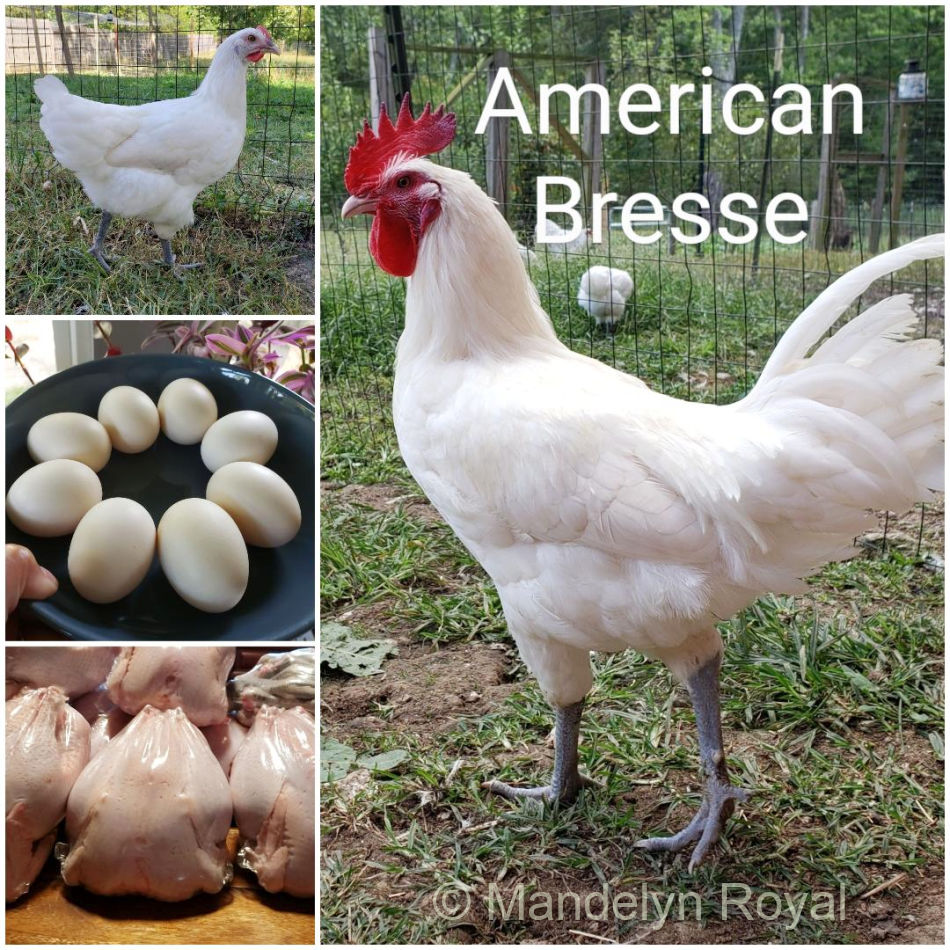
Photo credit: Mandelyn Royal.
